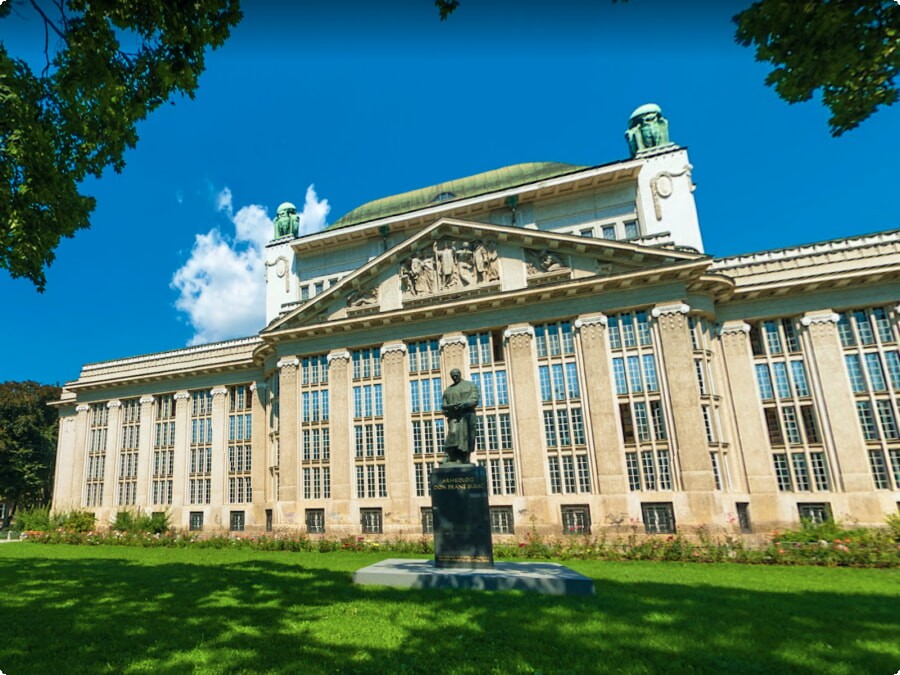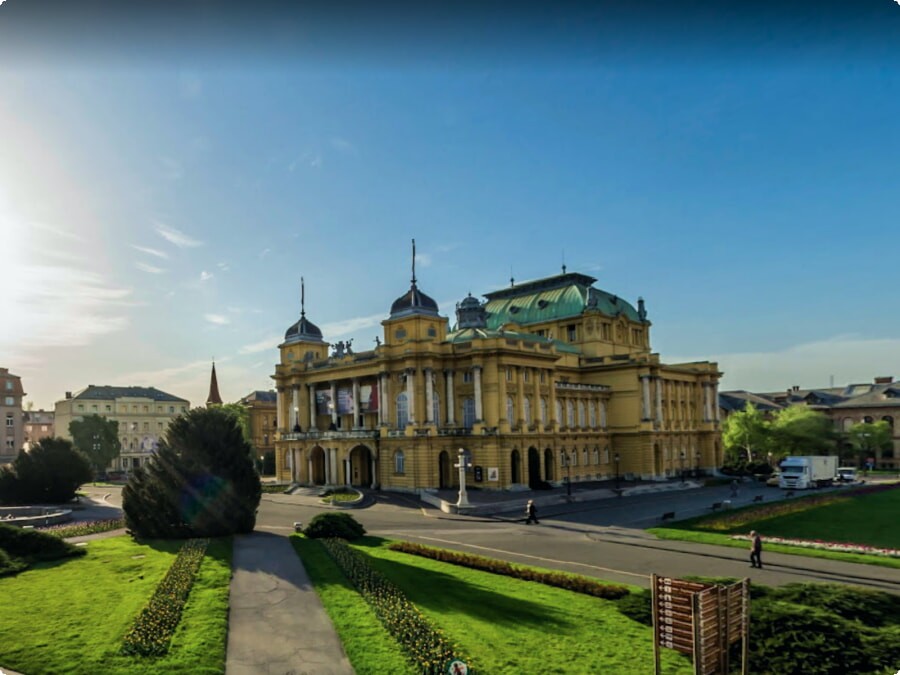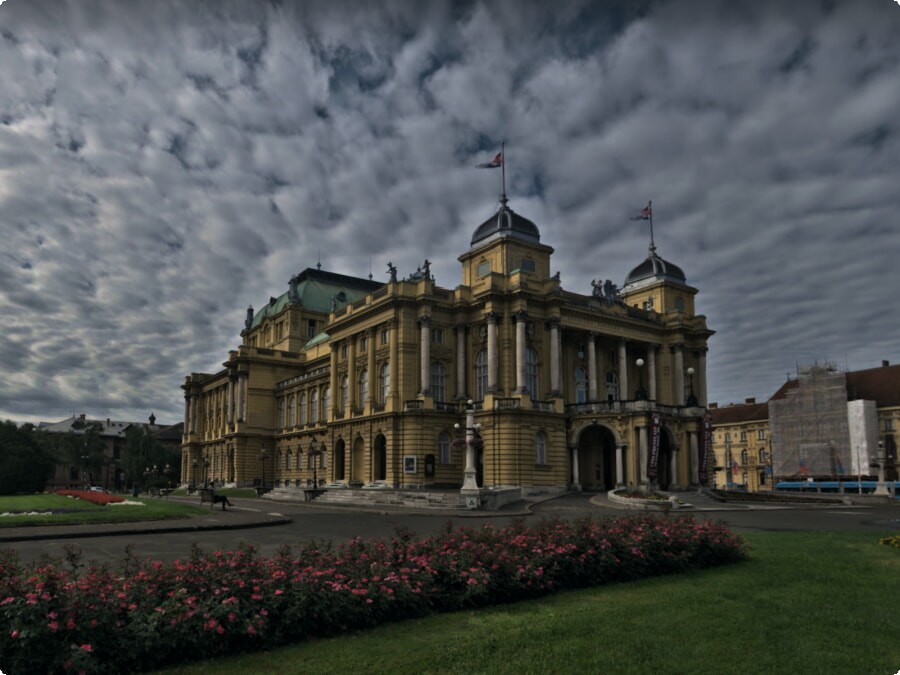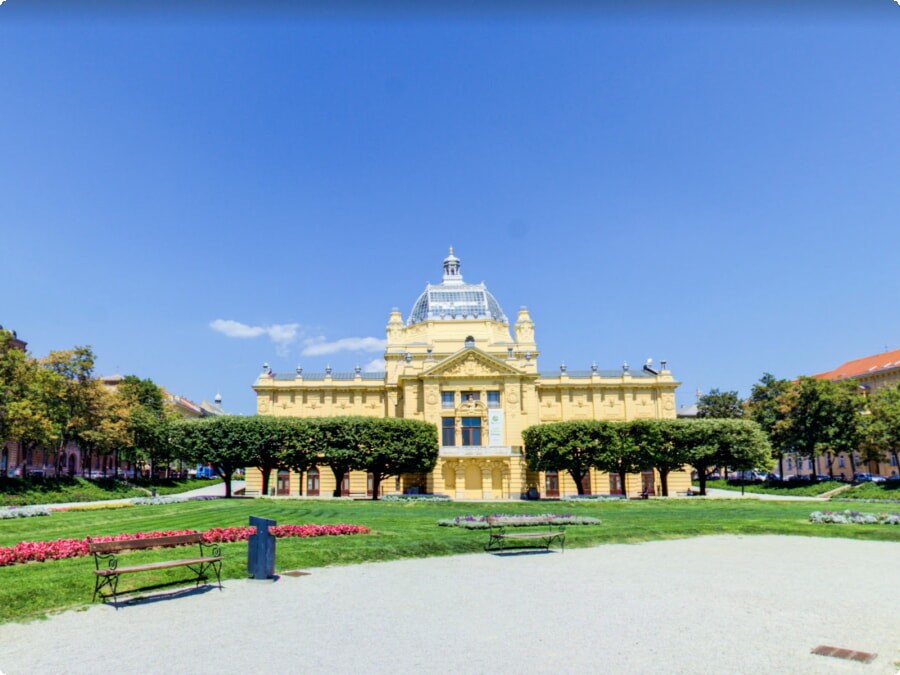In the capital of Croatia, Austro-Hungarian architecture encircles well-planned squares and parks. Start at Ban Jelacic Square, a hub surrounded by Biedermeier, Art Nouveau and post-Modernist buildings and the statue of Josip Jelacic, who abolished serfdom in the country.
Grab brunch at Esplanade Zagreb Hotel next to the train station, built in 1925 as a luxury layover on the Orient Express. Sit under chandeliers in the 1925 Lounge and order strukli, handmade pastries filled with local cottage cheese ($60).
1. Zagreb Cathedral
The Cathedral of the Assumption of the Blessed Virgin Mary and Saints Stephen and Ladislav is one of Croatia’s most imposing cultural landmarks. It’s the tallest building in the capital and looms over the city. The tympanum between the towers depicts the Virgin Mary with two angels, while the doorway shows Christ flanked by St Stephen and St Ladislaus. The cathedral has been rebuilt many times after fires and enemy attacks and was heavily damaged by the 1880 earthquake. The current neo-gothic form dates from the 1880s when it was rebuilt to designs by Herman Bolle. Its 6,000-pipe organ is ranked among the top 10 finest in Europe and its largest of eight church bells weighs more than 6,500 kg.
The long history of the cathedral stretches back to the 11th century when King Ladislaus of Hungary established the Diocese in Zagreb. It was destroyed by the Tatar hordes in 1242 and rebuilt a few years later. In the 14th and 15th centuries defending walls were added as the expansion of the Ottoman Empire threatened the city.
The present cathedral is a testament to the resilience of its people. During World War II it was badly damaged by a bomb but was quickly restored. Today it is a source of pride for all Croats and a must-visit for all travellers. Its soaring towers and beautiful interior can be seen from all over the city, but it’s best to come at night when its silhouette is most striking against the dark sky. The Cathedral is also home to the tomb of Kardinal Stepinac, who was Archbishop of Zagreb from 1946 to 1960 and was instrumental in Croatia’s independence movement.
It is impossible to get acquainted with the sights of Croatia in one day, as well as in a week, but you can see the maximum number of new places with the help of a rented car at one of the country's airports. For example, in Zagreb you can rent a car from 15 euros per day, in Dubrovnik - from 17 euros per day.

2. Mirogoj Cemetery
Located in the city’s Gornji Grad-Medvednica district, Mirogoj Cemetery (Croatian: “Groblje Mirogoj”) is considered one of Zagreb’s most noteworthy landmarks. With equal distribution of Catholic, Orthodox, and Jewish graves, as well as a few irreligious ones, it’s also home to many famous Croatian citizens, including poets, politicians, and artists.
The seven-acre property looks more like an elegant park than a typical graveyard thanks to its tree-lined walkways and neo-Renaissance arcade. Over 300,000 souls are buried here—a fact that can be hard to take in when walking around the grounds. But it’s impossible to overlook the beautiful monuments, and the ethereal feeling that permeates the atmosphere.
Mirogoj’s history begins with Ljudevit Gaj, a reformer and member of the Illyrian Movement. In 1872, he bought a vineyard and forest near Heresinec, where the cemetery now stands. He hired Hermann Bolle, the architect who also renovated the cathedral and created St. Mark’s church roof, to build the grand cemetery.
Bolle drew inspiration from his Italian, Viennese, and Prague counterparts to create the cemetery’s beautiful architecture. He planned for a grand entryway with two arcades followed by eight pavilions, and four more on the north side of the entrance. Unfortunately, he was never able to finish the project.
Today, the cemetery is considered an architectural masterpiece and a national monument. It was listed on the World Heritage Site list in 2000 and is protected by the state. In addition to its aesthetic value, the cemetery has a deep emotional and historical significance. Unfortunately, it is under threat as the Croatian government has not provided the necessary funds to rehabilitate it. International solidarity is greatly needed to save this magnificent complex.

3. The Esplanade Zagreb Hotel
Not many human activities have captured the imagination of the human mind and soul as much as traveling. From the stories of exploring new cultures and pursuing self-fulfillment to grandiose adventures undertaken only by the bravest, travel was and continues to be a major marker of human identity.
Located in the heart of the city and surrounded by a string of verdant parks, this hotel is the epitome of elegance and style. From the moment you enter, you’ll be welcomed by a staff that knows what it takes to make you feel at home. Guests rave about the heady fusion of history, style and comfort that is unique to this property.
The hotel was first opened in 1925 as a refuge for passengers of the Orient Express, and quickly became the centre of Zagreb’s social life with high-profile politicians, celebrities and film stars among its guests. It also became the location of choice for fashion shows, symposiums and gastronoic events.
Construction of the hotel began in 1923, and was completed in just twenty-six months. The grand hotel swung open its doors to its first guests on the 22nd of April 1925, and its initial 200 guests were treated to a gala dinner and a selection of room choices with a host of luxury amenities (hot and cold running water and telephone being just two of them).
Today, the Esplanade is one of Croatia’s most renowned hotels thanks to its impeccable standards, beautiful architecture and distinguished history. The Grand Dame of all Croatian hotels, its rooms are spacious and beautifully decorated, and the level of service here is truly exceptional. Wanda recommends this 5-star property for anyone who loves historic charm and grandeur, a sense of timelessness and true old-world hospitality.

4. The Museum of Broken Relationships
What started out as a joke by two Zagreb-based artists who broke up turned into one of the quirkiest museum collections in the world. The Museum of Broken Relationships has become a popular attraction thanks to its heartfelt and often funny stories about the ways people fall in and out of love.
Its collection includes mementos of a variety of relationships, from romantic ones to platonic ones and friendships. Some are heartbreaking, others are hilarious, but all of them give a glimpse into the ways in which we lose and find our hearts.
Visitors can donate a memento of their own and write the story that goes with it to add to the museum's collection. The objects are then displayed at the museum, which is located in a baroque palace in Zagreb's old town. The museum's founders, artist Drazen Grubisic and festival producer Olinka Vistica, have collected a variety of items from all over the world, from the mundane to the emotionally fraught. One of the more evocative pieces is a false leg donated by a soldier who lost it while fighting for Croatia's independence from Yugoslavia.
The museum has received objects from as far afield as China and America and the donations are typically anonymous, encouraging patrons to be completely honest. The museum also sells books that contain pictures and the full story behind each object.
The Museum of Broken Relationships has become so popular that it now attracts visitors from all over the world. In 2010, it won the EMYA Kenneth Hudson Award, which is given to the most innovative and daring museum projects in Europe. It is also the only museum to win this award in its category.

5. The Botanical Garden
The Botanical Garden is a gorgeously flower-filled oasis right in the heart of Zagreb. It was founded in 1889 and, despite being a scientific institution with research and cultivating indigenous Croatian plants as its prime focus, it’s also a fantastic place to relax and enjoy nature. Wander down the crisscrossing paths and take in the English-style arboretum, multihued flower parterre, greenhouse with giant water lilies, and red larch wood bridge. Then check out the botanical collection, ranging from exotic tropical and subtropical species to more temperate ones. The Garden also houses the original Art Nouveau gardener’s lodge, the Botanical Institute building, and the exhibition pavilion from 1891 – all of which have been beautifully restored in recent years.
The Green Horseshoe (Zagreb’s unique line of 19th-century town parks) surrounds the Botanical Garden and makes for a lovely stroll when the weather is nice. It’s also a great place for a picnic and there are plenty of restful corners to hide away in.
If you’d like to add some extra depth to your visit, then be sure to check out the exhibition of the famous animated film posters from the era of the Zagreb Animation School. It’s a fantastic showcase of the remarkable imagination and draughtsmanship that went into creating these works of art.
Want to explore more of Zagreb’s top attractions? Then download the free GPSmyCity app. It turns your phone into a self-guided tour guide and works offline, so you don’t need data or roaming to use it. You can also create your own personalized tours by adding places of interest and even making them private for friends and family. Click here for more information.
